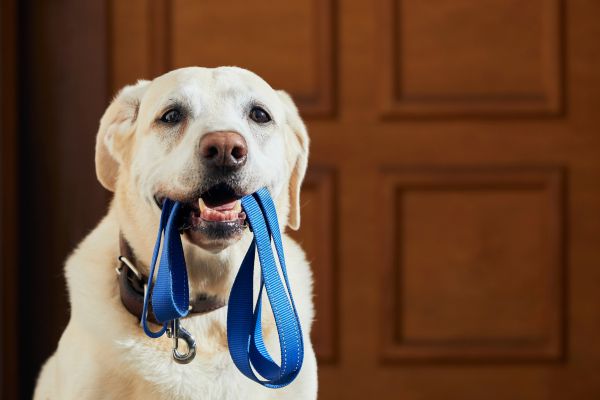Bringing a puppy into your life is exciting, but let’s be real—along with the joy comes a fair share of challenges. One of the biggest? Getting your pup comfortable with a leash. Leash training for puppies isn’t just about walking around the block; it’s about teaching them good manners, building trust, and making sure daily strolls don’t turn into tug-of-war battles.
Why Leash Training For Puppies Matters
Imagine this: you’re at the park, your pup spots another dog, and suddenly you’re being dragged across the grass like a sled. Not fun, right? Proper leash training helps avoid that chaos. It keeps your puppy safe from running into traffic or jumping on strangers, and it also makes walks a bonding experience instead of a stressful workout session for your arms.
Plus, let’s not forget that most neighborhoods and cities have leash laws. Training your puppy early ensures they’ll grow into a well-mannered companion who’s welcome everywhere.
When To Start Leash Training
The good news is—you don’t need to wait until your puppy is older. As soon as they’re around 8–10 weeks old, you can gently introduce leash training. Sure, at this stage, they’re tiny, wiggly, and curious about everything, but that’s exactly why it’s the perfect time. Puppies are like little sponges; they soak up habits quickly.
Starting young means you’re setting the stage for positive associations instead of having to correct bad habits later.
Picking The Right Gear
Before you even step outside, you’ll need the right tools. A comfortable harness is usually better for puppies than a collar, especially since their necks are delicate. Pair it with a lightweight leash that’s about four to six feet long. You don’t need fancy gadgets or retractable leashes just yet. Keep it simple.
Oh, and don’t underestimate the power of treats. Tiny bite-sized rewards are your best friend during leash training.
Step One: Getting Used To The Leash Indoors
The first step isn’t about walking outside. Instead, let your puppy wear the leash and harness inside the house. Let them drag it around while they play. This helps them get used to the new sensation without feeling restricted.
The thing is, you don’t want your pup associating the leash with stress. Keep it casual—lots of praise, gentle petting, maybe a treat or two. Soon enough, they’ll think of the leash as just another part of their world.
Step Two: Short Sessions With Guidance
Once your puppy feels comfy with the leash indoors, start guiding them gently. Walk a few steps and encourage them to follow you. If they come along, reward them. If they resist, don’t yank or scold. Just stay patient. Puppies respond way better to encouragement than force.
Keep sessions short—five to ten minutes max. Puppies have tiny attention spans, and ending on a good note makes them excited for the next round.
Step Three: Venturing Outdoors
Here comes the big moment: your first outdoor walk. Remember, everything outside is new to your puppy. The sounds, smells, other dogs, people—all of it can be overwhelming.
Don’t expect a perfect walk right away. Honestly, you’ll probably spend more time stopping and sniffing than actually walking. And that’s okay. Puppies need time to explore. Gradually, they’ll learn that the leash means moving forward with you, not darting in every direction.
Dealing With Common Struggles
Let’s talk about the hiccups you’ll likely face.
Pulling On The Leash
Every puppy does it. The trick is to stop walking the moment your pup pulls. Stand still, wait for the leash to loosen, then continue. It teaches them that pulling doesn’t get them anywhere.
Sitting Down And Refusing To Move
Sometimes puppies just plop down mid-walk. If that happens, don’t drag them. Use a cheerful voice, encourage them with a treat, and gently coax them forward.
Getting Distracted
Oh, the squirrels. Puppies have a radar for distractions. Instead of fighting it, work on redirecting their attention with a treat or toy. Consistency here pays off big time.
The Role Of Patience And Consistency
Leash training for puppies isn’t something you master in a weekend. It takes days, sometimes weeks, of consistent practice. Some puppies catch on fast, others need extra patience. The key is to stay calm, stay positive, and keep sessions enjoyable.
The thing is—your puppy wants to please you. If walks feel like a fun activity instead of a chore, progress will come naturally.
Building Positive Associations
One of the most overlooked parts of leash training is making the experience enjoyable for your pup. Always pair the leash with something good—treats, playtime, belly rubs. This way, the leash becomes a signal of fun adventures rather than restrictions.
Over time, your puppy won’t just accept the leash; they’ll get excited when they see it. That’s when you know you’ve nailed it.
How Long Before It Clicks?
There’s no magic number, but on average, you’ll see progress within two to four weeks of steady practice. Some puppies take longer, and that’s perfectly normal. Remember, the goal isn’t perfection—it’s creating a habit of walking calmly and safely by your side.
Final Thoughts On Leash Training For Puppies
At the end of the day, leash training for puppies is less about strict rules and more about building trust and understanding. You’re teaching your furry friend how to navigate the world safely while also strengthening your bond.
Yes, there will be moments of frustration. You might even question if you’re doing it right. But stick with it. Be patient, be consistent, and celebrate the little wins along the way.
Because one day, you’ll clip on that leash, head out the door, and realize your pup is walking right beside you—calm, happy, and in sync. And trust me, that’s one of the best feelings in the world for any pet owner.

